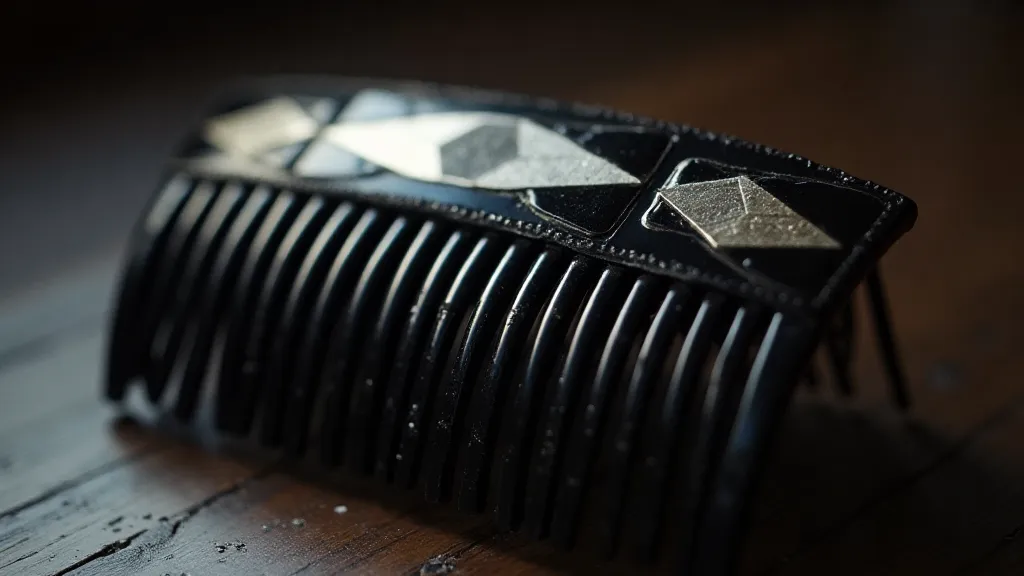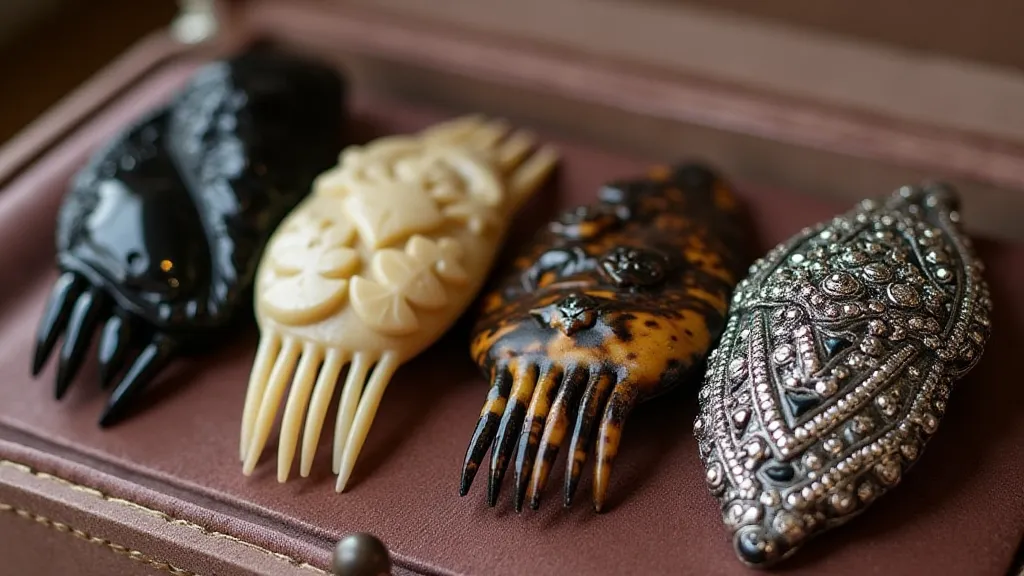The Geometry of Elegance: Deconstructing the Art Deco Hair Comb
There’s a particular thrill in holding a piece of the past. Not the grand monument or the revolutionary document, but something intimate, something that nestled in a woman’s hair, reflecting the light and the hopes of a bygone era. For me, that object is the Art Deco hair comb. It’s more than just a decorative item; it's a tiny, exquisitely crafted window into a world defined by optimism, innovation, and a passionate embrace of modern design.
I remember discovering my first Art Deco comb at a dusty antique market in rural England. Surrounded by chipped porcelain and faded photographs, it practically pulsed with an understated glamour. Its ebony and silver design, simple yet strikingly elegant, immediately captivated me. The vendor, a kindly gentleman with knowing eyes, simply shrugged when I inquired about its origins. “Just a comb, dear,” he said, but I knew it was so much more.
The Roaring Twenties and a New Aesthetic
The Art Deco movement, flourishing primarily from the 1920s to the 1930s, represented a dramatic shift from the flowing, organic forms of Art Nouveau. Following the devastation of World War I, there was a profound desire for progress, for a feeling of renewal. This manifested in architecture, furniture, fashion – and, crucially, in personal accessories like hair combs. The movement drew inspiration from diverse sources: Egyptian motifs (a fascination ignited by the discovery of Tutankhamun’s tomb), Cubism, and the streamlined efficiency of the burgeoning industrial age. It was a conscious move away from sentimentality and towards a future envisioned in chrome, glass, and geometric precision.
Hair combs, particularly, became a canvas for these new ideals. Women's hairstyles were evolving too. The elaborate Gibson Girl updos were giving way to sleek bobs and shorter, more manageable styles. A beautifully crafted comb wasn't just functional; it was a statement, a declaration of a modern sensibility. The comb was often the finishing touch to an impeccably styled look, reflecting the confidence and independence of the flapper and the increasingly sophisticated woman of the era.

Materials and Master Craftsmanship
The materials used in Art Deco combs were often as luxurious as the designs themselves. Bakelite, the first truly synthetic plastic, became incredibly popular for its versatility and ability to be molded into intricate shapes. Ivory, while increasingly controversial, was also employed, alongside silver, marcasite (a form of iron pyrite), and occasionally, enamel. The use of these materials wasn’t simply about ostentation; it was about celebrating technological innovation and the potential of new materials.
The craftsmanship involved was, and still is, remarkable. Many combs were hand-carved and meticulously assembled. The precision required to set hundreds of tiny marcasite stones, or to create the delicate inlays of silver or enamel, speaks volumes about the skill of the artisans. You can often feel the weight and substance of a well-made Art Deco comb, a tactile reminder of the hours of labor invested in its creation. Even simpler combs, made from molded Bakelite, possess a quality that’s difficult to replicate today; a depth of color and a subtle texture born from the manufacturing process.
Deciphering the Design Language
The characteristic Art Deco design language is instantly recognizable. Symmetry is paramount. Angularity replaces curves. Sunbursts, chevrons, and stepped patterns (often referred to as “Egyptian Revival”) are repeated motifs. These shapes aren’t arbitrary; they convey a sense of order, dynamism, and forward motion. The repetition and precise geometry communicate a feeling of machine-age precision, yet the use of luxurious materials and often exquisite detailing prevents the designs from feeling cold or impersonal. There’s a conversation happening between the industrial and the artistic – a delicate balance that defines the era’s aesthetic.
Consider the sunburst pattern. More than just decorative, it evokes the promise of a bright future, a sense of optimism following years of hardship. The stepped patterns, reminiscent of ziggurats, nod to the fascination with ancient civilizations and their grandeur.

Collecting and Caring for These Treasures
Collecting vintage hair combs, especially those from the Art Deco period, can be an incredibly rewarding hobby. It’s not just about acquiring beautiful objects; it's about connecting with a tangible piece of history. However, like all antiques, they require careful handling and preservation.
Bakelite, while durable, can become brittle with age and is susceptible to damage from prolonged exposure to heat or sunlight. Ivory requires stabilization to prevent cracking. Silver can tarnish, and marcasite can loosen. Gentle cleaning with a soft cloth is usually sufficient. Avoid harsh chemicals or abrasive cleaners. Proper storage, away from extreme temperatures and humidity, is essential.
When examining a comb, look for signs of repair or damage. While some restoration is acceptable, be wary of combs that have been heavily altered. Authenticity is also key; be aware that reproductions exist, although they often lack the quality and patina of the originals. A jeweler or antique expert can often help determine authenticity.
A Lasting Legacy of Style
The Art Deco hair comb represents more than just a fashionable accessory. It embodies an era of profound change, of hope, and of a relentless pursuit of beauty and innovation. Holding one in your hand is like holding a fragment of that optimism, a tiny testament to the enduring power of design. They're not just beautiful objects; they’re stories etched in Bakelite and silver – stories of a time when the future seemed limitless, and elegance was a reflection of that hope.






